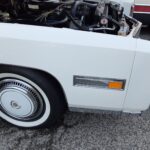In the realm of modern automotive technology, the drivetrain stands as a critical system, responsible for transmitting power from the engine or motor to the wheels, propelling the vehicle forward. Within the landscape of hybrid-electric vehicles, the drivetrain’s configuration dictates the intricate dance between the electric motor and the conventional internal combustion engine. This design significantly influences a vehicle’s mechanical efficiency, fuel economy, and overall cost.
Hybrid vehicles employ various drivetrain designs, each with unique characteristics. Among these, the Parallel Hybrid drivetrain stands out for its distinctive approach to power delivery. Unlike series hybrids, where the electric motor solely drives the wheels, parallel hybrids harness the combined power of both an electric motor and a gasoline engine to propel the vehicle. This synergy offers a blend of efficiency and performance, making parallel hybrid drivetrains a noteworthy technology in the automotive world.
Understanding Parallel Hybrid Drivetrains
Parallel hybrid drivetrains are characterized by their ability to utilize both the internal combustion engine and the electric motor in a combined manner to drive the vehicle’s wheels. This contrasts with series hybrid systems, where the engine primarily acts as a generator for the electric motor. In a parallel configuration, both power sources are mechanically linked to the wheels, allowing for a more direct and efficient transfer of power, particularly under various driving conditions.
A key feature of parallel hybrid systems is their ability to operate in different modes, leveraging the strengths of both the engine and the electric motor. For instance, during periods of high power demand, such as acceleration or highway driving, both the engine and the electric motor can work together to provide maximum propulsion. Conversely, under low-load conditions, like cruising or gentle acceleration, the system might primarily rely on the electric motor, or a combination of both, optimizing fuel efficiency and reducing emissions.
Parallel hybrids typically incorporate a smaller battery pack compared to series hybrids. This is because the electric motor often plays a supplementary role, working alongside the engine rather than being the sole source of mechanical power. Regenerative braking, a common feature in hybrid vehicles, is crucial in parallel systems for recapturing energy during deceleration and braking, helping to recharge the battery and enhance overall efficiency. Furthermore, in scenarios where power demands are minimal, the electric motor in parallel hybrids can also function as a generator, providing additional battery charging, similar to the function of an alternator in conventional gasoline vehicles.
Advantages of Parallel Hybrid Drivetrains
Parallel hybrid drivetrains offer several key advantages, making them a compelling choice for automakers and consumers alike:
-
Enhanced Highway Efficiency: A significant benefit of parallel hybrids lies in their efficiency at higher speeds and during highway driving. Because the internal combustion engine is directly connected to the wheels, the energy losses associated with converting mechanical power to electricity and back, as seen in series hybrids at higher speeds, are minimized. This direct mechanical link contributes to improved fuel economy and reduced emissions during highway commutes and longer journeys.
-
Balanced Performance: Parallel systems provide a good balance between electric and engine power, offering responsive acceleration and adequate power for diverse driving situations. The combined output of the engine and electric motor ensures that the vehicle can handle both city and highway driving effectively.
-
Simpler Design (Compared to Series/Parallel): Compared to the more complex series/parallel hybrid drivetrains, parallel systems generally have a simpler design. This relative simplicity can translate to potentially lower manufacturing costs and easier maintenance in some aspects.
-
Regenerative Braking Efficiency: Parallel hybrids effectively utilize regenerative braking to recapture energy during deceleration. This process converts kinetic energy back into electrical energy, which is then stored in the battery, improving overall energy efficiency and reducing wear on traditional braking components.
Considerations for Parallel Hybrid Drivetrains
While parallel hybrid drivetrains offer numerous benefits, there are also factors to consider:
-
Stop-and-Go Traffic Efficiency: Although more efficient than conventional gasoline vehicles, parallel hybrids may not be as optimized for stop-and-go traffic as series hybrids. In slow, urban driving conditions, series hybrids, which can rely solely on electric power, often exhibit greater fuel efficiency. However, parallel hybrids still offer improvements over traditional combustion engines in these scenarios.
-
Battery Size and Electric Range: Parallel hybrids typically feature smaller battery packs compared to series or series/parallel hybrids. This often results in a more limited all-electric driving range. The electric motor in parallel systems is primarily designed to assist the engine and enhance overall efficiency, rather than provide extended periods of electric-only driving.
Parallel Hybrid vs. Other Drivetrain Types
To fully appreciate the characteristics of parallel hybrid drivetrains, it’s helpful to compare them with series and series/parallel configurations:
-
Parallel vs. Series Hybrid: In series hybrids, the electric motor is the sole source of power to the wheels, with the engine acting as a generator. This configuration excels in stop-and-go city driving. Parallel hybrids, in contrast, use both the engine and motor to drive the wheels, showing strength in highway and mixed driving conditions.
-
Parallel vs. Series/Parallel Hybrid: Series/parallel drivetrains, often considered the most sophisticated, combine features of both series and parallel systems. They offer the flexibility to operate in electric-only mode, engine-only mode, or a combination of both, optimizing efficiency across a wider range of driving conditions. While offering maximum flexibility, series/parallel systems are generally more complex and costly than parallel hybrids. Parallel hybrids strike a balance, providing significant efficiency gains with a less complex system.
Conclusion
Parallel hybrid drivetrains represent a significant advancement in automotive technology, offering a compelling blend of efficiency, performance, and design simplicity. By intelligently combining the strengths of an internal combustion engine and an electric motor, parallel hybrid systems deliver improved fuel economy, especially in highway driving, and a balanced driving experience. While series and series/parallel hybrids cater to different priorities and driving conditions, the parallel hybrid drivetrain remains a valuable and widely adopted solution in the pursuit of more efficient and sustainable transportation.
